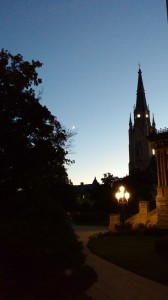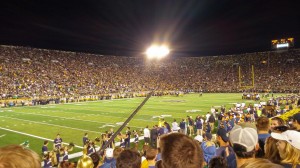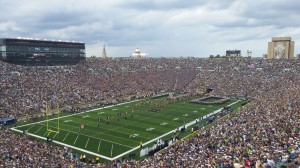A post from our student blogger Megan
You probably haven’t thought about how many patents there are floating around out there but in all honesty, there is virtually a whole sea of them. Patents and published patent applications are considered “prior art,” or all the information that is already available to the public that may impact the uniqueness of a prospective patent. Prior art plays a large role in whether someone is entitled to a patent and it must be thoroughly vetted before a patent can ever be granted. There is, however, a lot of it to wade through. The United States Patent and Trademark Office (USPTO) granted a total of 302,948 patents last year—an all-time high. But the United States government has been awarding patents since 1790 when Samuel Hopkins received the first grant on potash, a component used to make fertilizer. Currently, the USPTO is issuing patents in the 8,000,000 range. However, the USPTO did not start counting patents until July 13, 1836. This means that there are 9,957 more patents that need to be accounted for that were issued before the USPTO started keeping records.
United States patents are only a portion of the patents that exist worldwide, though. Espacenet, a website generated by the European Patent Office (EPO), boasts that you can research their databases for over 80,000,000 patent document records kept since 1836. Additionally, the World Intellectual Property Organization (WIPO), offers Patentscope, an even more comprehensive search database that covers patent documents from ninety countries. Granted, these documents are mostly patent applications, and you must note that patents have expiration dates, so you can bet that the majority of the patents you encounter on these databases are likely out of date. But all of these documents represent ideas that someone thought important enough to request legal patent protection. Furthermore, they are important to anyone who seeks patent protection due to the laws that prospective applicants must abide by.
Title 35 of the United States Code Section 102(a) states that, among other things, a person may not be entitled to a patent if the invention was “patented [or] described in a printed publication…” This means that if your inventive concept has already been “anticipated,” or previously patented or published in a patent application anywhere in the world, you cannot receive patent protection on that particular invention. Now, there are exceptions to this rule, but the main focus is to find all of these previously issued patents or publications that may preempt your patent so you can adequately inspect them first. This process is called patent searching. While a patent search is not required to file a patent application, it is highly recommended.
For the past six weeks, students in the MSPL program at the University of Notre Dame have been studying prior art exploration methods in their patent searching class. The sheer number of patents and patent documents seem like a daunting prospect when you are up against a massive sea of prior art awash in the World Wide Web. There are specific steps to strategically search for relevant patents and publications, though. The first step to any search is to develop search terms. Think about the invention and narrow down words that truly describe what it constitutes. From there, draft a “building block” strategy of synonymous terms. For example, if the new invention involves a method of three-dimensional cancer diagnosis, your original search terms may include those three words. Build on these words by choosing synonyms that match these meanings for a more expansive search. Cancer could be substituted with the word “tumor,” “three-dimensional” could also mean “multidimensional,” and “diagnosis” could be replaced with the word “analysis.”
The next step is to run an actual search on the terms you have developed. There are a multitude of electronic databases that searchers use to dig up relevant documents. Besides Espacenet and Patentscope, there are domestic databases that aid in searches as well. The USPTO website is dedicated to searches for United States patents and applications. Moreover, Google Patents is a quick, free search engine geared towards the general public. One can google a patent number, title, or general concept and pull hundreds of patents in seconds from this database. Once the searcher finds relevant patents and published documents relating to the new inventive concept it is his or her duty to examine these and decipher whether they would prevent the inventor from receiving a patent.
This is a general overview of patent searching—patent searching is not quick or easy, though. There are professional searchers that have made a career out of searching for prior art patents. The reward is in crafting a search the edges close to the new technology that you are searching, but is still different enough in scope that the new concept remains novel. So while the amount of prior patents and documents may be vast, there is no need to fear diving into the prior art pool: formulate a search strategy and jump in.


